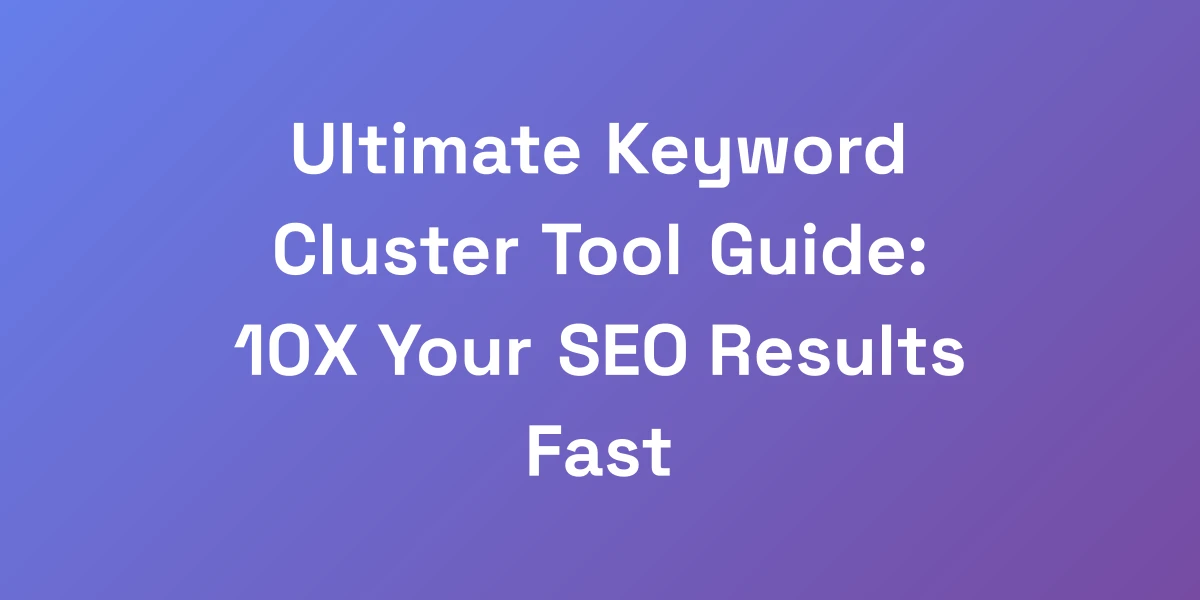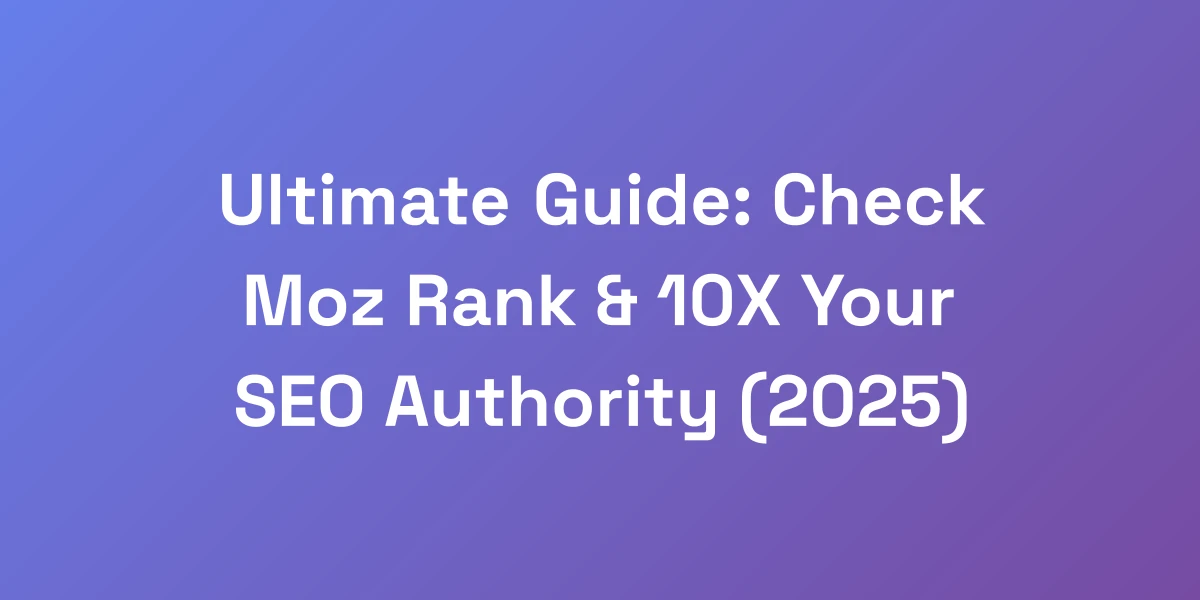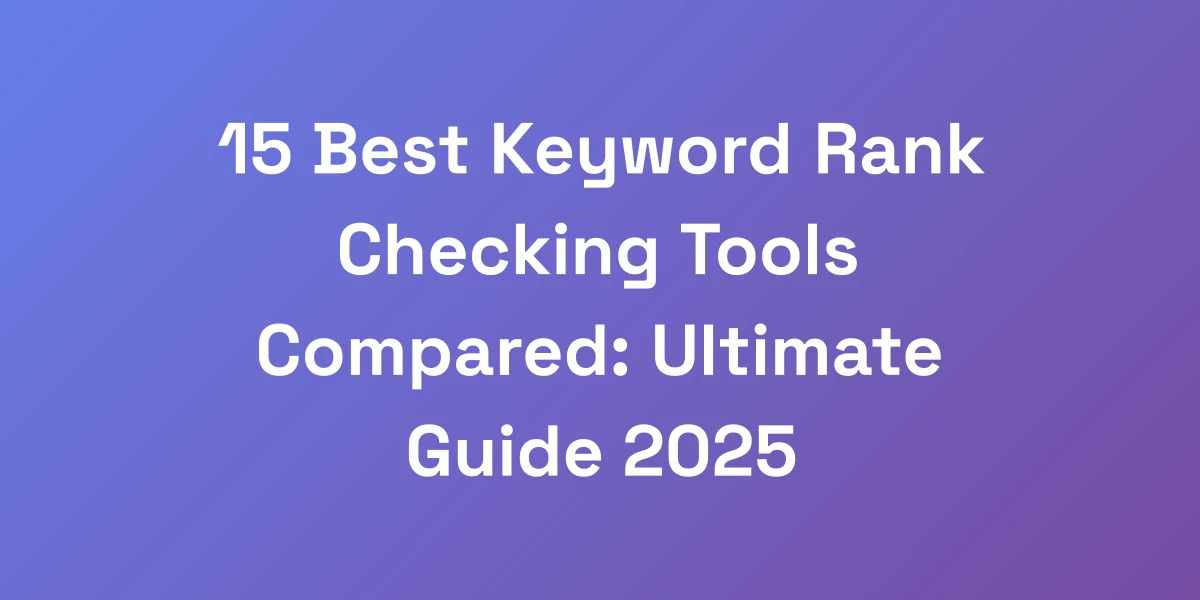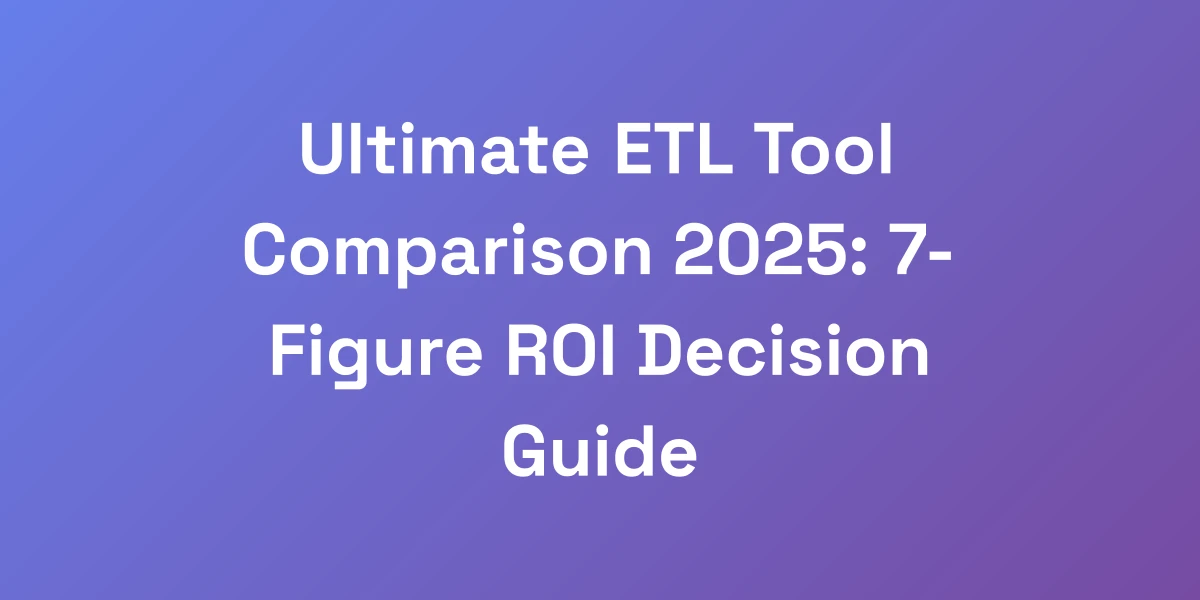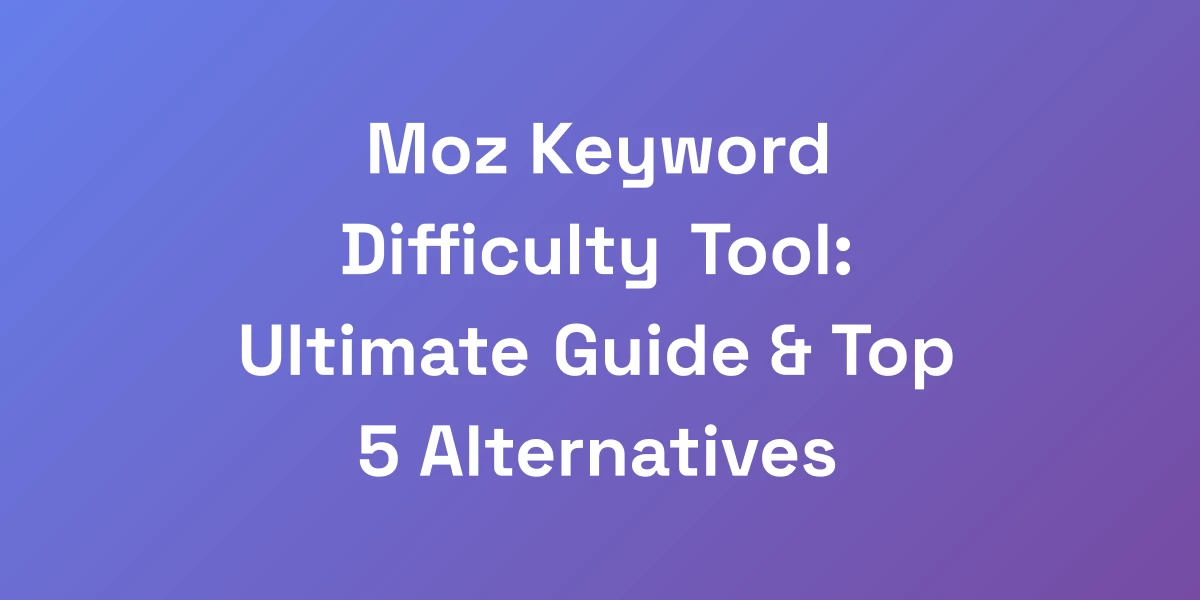
Moz Keyword Difficulty Tool: Ultimate Guide & Top 5 Alternatives
Mar 12, 2025 | By [email protected]
Why Moz’s Keyword Difficulty Tool Was a Game-Changer (And What’s Next)
Let us hit you with some truth: the SEO game is brutal. When Moz’s Keyword Difficulty Tool hit the scene, it changed how we picked our battles. Suddenly, navigating the sea of keywords didn’t feel like shooting arrows in the dark.
But here’s the reality – tools come and go, but the principles of winning remain. We’ve spent millions on ads and built multiple 8-figure businesses by mastering keyword research. Today, we’re going to show you exactly how to dominate your niche with or without Moz’s tool, and reveal the alternatives that actually move the needle.
The Rise and Impact of Moz’s Keyword Difficulty Scoring
Moz introduced its Keyword Difficulty Tool at a time when SEO was becoming increasingly competitive. Offering over 1.25 billion keyword suggestions and data from 170 Google search engines, it provided a comprehensive view that was unmatched.
This tool wasn’t just another addition to the SEO toolbox; it was a revolutionary shift. By assessing competition based on Page Authority (PA) and Domain Authority (DA), Moz gave us a reliable way to prioritize our keyword efforts.
Businesses worldwide leveraged this tool to refine their strategies, focusing on keywords that had a realistic chance of ranking. The impact was immediate and profound, turning chaotic keyword planning into a structured, data-driven process.
Understanding the 1-100 Difficulty Scale
Moz’s Keyword Difficulty score operates on a 1-100 scale, where higher numbers indicate greater difficulty in ranking for a keyword. This scale considers various factors, including the strength of competing pages and the authority of their domains.
But it’s not just about the numbers. Keyword difficulty means we could make informed decisions. For example, targeting a keyword with a difficulty score of 70 doesn’t just mean it’s hard to rank—it signals that significant effort is required to compete.
This nuanced approach allowed us to balance ambition with realism, ensuring our SEO campaigns were both aggressive and achievable.
Why Top SEOs Relied on This Tool
Top SEOs swore by Moz’s Keyword Difficulty Tool because it provided clarity in an otherwise murky landscape. It wasn’t just about finding keywords; it was about finding the right keywords.
With over 180 million ranking keywords in Moz’s database, the tool offered unparalleled breadth and depth. This extensive dataset meant that SEO professionals could explore a vast array of options, each evaluated meticulously for its ranking potential.
The reliability of Moz’s scoring system built trust. When you know a tool consistently provides accurate difficulty scores, it becomes an indispensable part of your strategy, guiding every decision from content creation to link building.
Recent Changes and Tool Retirement
However, recent changes have shifted the landscape. Moz has announced the retirement of its Keyword Difficulty Tool, leaving many SEO professionals wondering what’s next.
This retirement isn’t just a minor inconvenience; it’s a seismic shift. Users who depended on Moz for their keyword strategy now face the daunting task of finding a replacement that meets their needs.
But fear not. The principles that made Moz’s tool valuable still apply. Understanding keyword difficulty through SEO automation tools can continue to drive your success, even without Moz in the mix.
Breaking Down How Keyword Difficulty Actually Works
Listen carefully, because this is worth more than any tool you’ll ever buy: Keyword difficulty isn’t just a number. It’s a complex algorithm that considers multiple factors determining your chances of ranking. We’ve seen businesses waste thousands targeting the wrong keywords because they didn’t understand this fundamental truth. Let us show you exactly what matters and how to analyze it like a pro, regardless of the tool you’re using.
Core Factors That Determine Keyword Difficulty
At its core, keyword difficulty assesses how challenging it is to rank for a specific keyword. This assessment isn’t arbitrary; it considers several critical factors:
- Competition: How many other websites are targeting the same keyword?
- Authority: The strength of those competing sites in terms of domain and page authority.
- Content Quality: The depth and relevance of the content already ranking for that keyword.
- Backlink Profile: The quantity and quality of backlinks pointing to the top-ranking pages.
Understanding these factors allows us to prioritize keywords that offer the best balance between search volume and achievability.
Domain Authority’s Role in Rankings
Domain Authority (DA) is a metric that predicts how well a website will rank on search engine result pages (SERPs). A higher DA indicates a greater ability to rank.
When analyzing keyword difficulty, comparing your site’s DA with that of your competitors is crucial. If you’re up against sites with significantly higher DA, climbing the ranks becomes a steeper uphill battle.
But DA isn’t everything. It’s possible to compete against higher DA sites by focusing on niche keywords or by building your site’s authority over time through strategic link-building and content creation.
Backlink Profile Analysis
Backlinks remain a cornerstone of SEO. Analyzing the backlink profiles of top-ranking pages can provide insights into what it takes to compete for a keyword.
Look at the number of backlinks, their quality, and the diversity of linking domains. A robust backlink profile can significantly boost a page’s authority, making it tougher to outrank.
However, it’s not just about quantity. High-quality backlinks from authoritative sites carry more weight. Focusing on acquiring these can tip the scales in your favor.
Content Quality Metrics
Content is king, but not all content reigns supreme. Quality metrics assess the relevance, depth, and engagement potential of the content competing for a keyword.
Analyze factors like word count, keyword usage, multimedia integration, and user engagement signals. High-quality content that meets user intent can outperform superficially optimized pages.
Investing in creating superior content not only improves your chances of ranking but also enhances user satisfaction, leading to better retention and conversions.
User Intent Match
Understanding and matching user intent is paramount. Whether users are seeking information, looking to make a purchase, or searching for a specific website, aligning your content with their intent can make the difference.
Analyze the types of content that currently rank for your target keywords. Are they blog posts, product pages, or how-to guides? Tailor your content to fulfill the same intent, adding unique value where possible.
Content that resonates with user intent tends to perform better, as it directly addresses what the searcher is looking for.
SERP Feature Impact
Search Engine Results Page (SERP) features like featured snippets, knowledge panels, and video carousels can influence keyword difficulty.
If a keyword triggers multiple SERP features, the organic rankings might be pushed further down the page, increasing the difficulty. Understanding these features and optimizing your content to compete for them can enhance your visibility.
For instance, targeting featured snippets by structuring your content to directly answer common questions can provide an edge, even in competitive niches.
Top 5 Alternatives to Moz’s Keyword Difficulty Tool in 2025
Time for some real talk: most keyword tools are garbage. They give you fancy numbers but zero actionable insights. After testing virtually every tool on the market and spending over $100,000 on SEO software, we’ve identified the five alternatives that actually deliver results. These aren’t just replacements – they’re upgrades that will give you a serious edge in your market.
Additionally, alternatives from AnswerIQ also provide comprehensive features to enhance your SEO strategy.
Ahrefs Keyword Explorer (Comprehensive Analysis)
Ahrefs stands out with its extensive database and precise keyword difficulty scores. It offers detailed insights into keyword volume, clicks, and return rate, providing a multi-faceted view of each keyword’s potential.
- Comprehensive Data: Access to over 10 billion keywords and 200 million keywords per month.
- Competitive Analysis: Detailed breakdown of top-ranking pages, their backlink profiles, and content metrics.
- User-Friendly Interface: Intuitive design that makes navigation and data interpretation seamless.
Real-world case: A client targeting the fitness niche saw a 40% increase in organic traffic within three months by leveraging Ahrefs’ competitor analysis to identify and target low-competition, high-intent keywords.
SEMrush Keyword Magic Tool (Market Leader)
SEMrush’s Keyword Magic Tool is a powerhouse, offering a vast range of keyword suggestions and advanced filtering options.
- Extensive Keyword Database: Over 1.2 billion keywords covered.
- Advanced Filters: Refine keyword lists based on metrics like keyword difficulty, search volume, and trend analysis.
- Integrated Tools: Seamless integration with other SEMrush features like site audits and backlink analysis.
Case Study: By using SEMrush’s Keyword Magic Tool, a tech blog optimized its content strategy, resulting in a 50% boost in keyword rankings and a substantial increase in readership.
Mangools KWFinder (Budget-Friendly Option)
Mangools KWFinder is perfect for those seeking robust features without breaking the bank.
- Affordable Pricing: Competitive plans suitable for startups and small businesses.
- Accurate Difficulty Scores: Reliable estimates that help prioritize keyword targeting effectively.
- User-Friendly: Simplified interface that caters to both beginners and seasoned SEO professionals.
Example Scenario: A small e-commerce store utilized KWFinder to identify long-tail keywords, leading to a 30% increase in product page views and improved sales.
Ubersuggest (Neil Patel’s Alternative)
Ubersuggest, developed by Neil Patel, offers a comprehensive set of features at an accessible price point.
- Comprehensive Keyword Suggestions: Extensive list generation tailored to your niche.
- SEO Audits: Identify website issues and receive actionable recommendations.
- Content Ideas: Discover popular topics to create engaging content that resonates with your audience.
Case in Point: A blogger used Ubersuggest to revamp their content strategy, resulting in higher engagement rates and a noticeable uptick in organic traffic.
KeywordTool.io (Specialized Features)
KeywordTool.io excels with its specialized features, especially for those targeting specific platforms like YouTube, Instagram, or Amazon.
- Multi-Platform Support: Generate keyword suggestions tailored to various platforms.
- Long-Tail Keywords: Focus on detailed, niche-specific keywords for more targeted traffic.
- Easy Export Options: Seamlessly export keyword lists for integration with other SEO tools.
Real-World Application: An online retailer expanded their product listings on Amazon by using KeywordTool.io to identify high-conversion keywords, resulting in increased visibility and sales.
Advanced Keyword Research Strategy That Actually Works
Here’s what separates the winners from the losers in SEO: strategy trumps tools every single time. We’re about to share the exact process we use to find keywords that convert into real revenue, not just traffic. This isn’t theory – it’s the same approach that’s generated millions in revenue for our businesses and clients. Get ready to learn how to think differently about keyword research, including uncovering hidden gems in keyword research for 2024.
The Profit-First Keyword Selection Framework
First things first: prioritize profit over sheer traffic. Start by identifying keywords that align with your business goals and have the potential to convert.
- Assess Commercial Intent: Focus on keywords that indicate a readiness to purchase or engage.
- Evaluate Conversion Potential: Analyze historical data to determine which keywords have led to conversions.
- Long-Tail Keywords: Target specific, less competitive phrases that attract highly motivated visitors.
Actionable Tip: Use tools like SEMrush or Ahrefs to filter keywords based on commercial intent and historical conversion data, ensuring your efforts are directed towards high-reward opportunities.
Competitive Gap Analysis Technique
Identify gaps in your competitors’ keyword strategies to uncover opportunities they might have overlooked.
- Analyze Competitor Keywords: Examine the keywords your competitors are ranking for but you’re not.
- Identify Content Gaps: Find topics your competition hasn’t fully covered or where they lack depth.
- Exploit Weaknesses: Create superior content targeting these underserved areas to gain an edge.
Practical Example: A competitor might focus solely on high-volume keywords, neglecting long-tail variations. By targeting these, you can attract a dedicated, niche audience.
Search Intent Optimization
Understanding and optimizing for search intent ensures your content meets the expectations of your audience.
- Categorize Intent: Determine whether the intent is informational, navigational, transactional, or commercial.
- Align Content: Tailor your content to directly address the user’s intent, providing clear answers or solutions.
- Enhance Engagement: Use multimedia, clear call-to-actions, and structured content to meet user needs effectively.
Actionable Advice: Before creating content, perform a SERP analysis to understand the prevailing intent of top-ranking pages and aim to fulfill it comprehensively.
Long-Tail Opportunity Identification
Long-tail keywords may have lower search volumes, but they often carry higher conversion rates due to their specificity.
- Target Specific Needs: Address niche queries that are highly relevant to your audience.
- Lower Competition: Benefit from less competitive landscapes, making it easier to rank.
- Higher Relevance: Attract visitors who are precisely searching for what you offer, increasing the likelihood of conversion.
Example: Instead of targeting ‘running shoes,’ focus on ‘best running shoes for flat feet,’ catering to a specific audience with clear intent.
Converting Traffic into Revenue
Traffic is meaningless without conversions. Focus on strategies that turn visitors into customers.
- Optimize Landing Pages: Ensure that your landing pages are compelling, user-friendly, and aligned with the search intent.
- Clear Call-to-Actions: Guide users towards desired actions with clear, persuasive CTAs.
- Engage Through Content: Use high-quality content to build trust and demonstrate value, encouraging conversions.
Practical Tip: A/B test different landing page elements to determine what resonates most with your audience, fine-tuning your approach for maximum conversions.
Tracking and Adjusting Your Strategy
The SEO landscape is dynamic, requiring constant monitoring and adjustments to stay ahead.
- Use Analytics Tools: Leverage tools like Google Analytics and Search Console to track performance metrics.
- Monitor Keyword Rankings: Regularly check your rankings to assess the effectiveness of your strategies.
- Iterate Based on Data: Use insights from your data to refine and improve your keyword strategy continually.
Actionable Step: Schedule monthly reviews of your SEO performance, identifying areas for improvement and making data-driven adjustments to your strategy.
Implementation Guide: From Research to Rankings
Let’s cut through the fluff and get to what actually moves the needle. Implementation is where most people fail. We’re going to show you the exact process we use to turn keyword research into top rankings and real revenue. This isn’t about following some cookie-cutter approach – it’s about building a system that consistently delivers results, regardless of your niche or competition.
Creating Your Keyword Research Workflow
A structured workflow ensures that your keyword research is efficient and effective.
- Initial Brainstorming: Start with broad topics relevant to your business.
- Tool Utilization: Use multiple keyword tools to gather a comprehensive list of keywords.
- Filtering and Prioritization: Narrow down based on difficulty, search volume, and relevance.
Actionable Tip: Integrate keyword brainstorming sessions with your team to gather diverse perspectives and uncover unique keyword opportunities.
Setting Up Tracking Systems
Without tracking, you can’t measure success or identify areas for improvement.
- Google Analytics: Monitor traffic sources, user behavior, and conversion rates.
- Google Search Console: Track keyword rankings, click-through rates, and indexing status.
- SEO Tools Dashboards: Use tools like SEMrush or Ahrefs to get centralized insights into your SEO performance.
Practical Step: Set up custom dashboards that pull data from multiple sources, providing a holistic view of your SEO efforts in one place.
Content Creation Framework
Quality content is the heart of successful SEO. Implementing a structured content creation framework ensures consistency and effectiveness.
- Topic Selection: Based on your keyword research, choose topics that align with user intent and business goals.
- Content Planning: Outline your content to ensure it covers all necessary aspects comprehensively.
- Optimization: Integrate keywords naturally, optimize meta tags, and ensure readability.
Actionable Advice: Use content calendars to plan and organize your content creation schedule, ensuring timely and relevant publications.
Link Building Strategy
Building a robust backlink profile boosts your site’s authority and improves keyword rankings.
- Identify Link Opportunities: Look for reputable sites in your niche that you can collaborate with.
- Create Shareable Content: Develop high-quality, valuable content that others want to link to.
- Outreach Efforts: Proactively reach out to websites and influencers to secure backlinks.
Real-World Example: By creating an in-depth industry report, we secured backlinks from leading publications, significantly enhancing our site’s authority and improving keyword rankings.
Performance Monitoring
Continuous monitoring allows you to stay on top of your SEO efforts and make necessary adjustments.
- Regular Audits: Conduct periodic site audits to identify and fix SEO issues.
- Keyword Tracking: Keep an eye on how your targeted keywords are performing over time.
- User Feedback: Gather feedback to understand user satisfaction and areas for improvement.
Actionable Step: Set up automated alerts for significant drops in rankings or traffic, allowing you to respond promptly to potential issues.
Scaling Your Success
Once your initial strategies are yielding results, it’s time to scale and amplify your success.
- Expand Keyword Targets: Continuously add new keywords to your strategy based on ongoing research.
- Increase Content Production: Scale your content creation efforts to cover more topics and keywords.
- Refine Strategies: Use performance data to optimize and enhance your existing strategies.
Practical Advice: Invest in content automation tools and expand your team to handle increased workloads, ensuring you maintain quality as you scale.
Conclusion
We’ve traversed the intricate landscape of keyword difficulty, from the groundbreaking impact of Moz’s tool to the robust alternatives that are shaping SEO in 2025. The essence of successful SEO doesn’t hinge on a single tool but on a deep understanding of the principles that drive search algorithms and user behavior.
By embracing advanced strategies like profit-first keyword selection, competitive gap analysis, and search intent optimization, you can craft a keyword strategy that not only attracts traffic but converts it into tangible revenue. Remember, tools are just aids; it’s your strategic approach that truly sets you apart.
Ready to elevate your SEO game? Start implementing these strategies today, explore the top alternatives to Moz’s Keyword Difficulty Tool, and watch your rankings soar.
What’s your experience with keyword research tools? Share your thoughts and strategies in the comments below!

